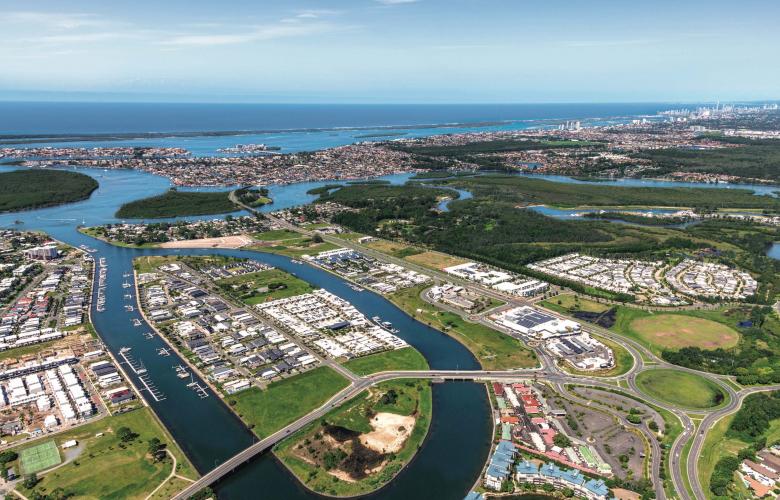Gold Coast’s Hope Island undergoes massive transformation through development boom
Contact
Gold Coast’s Hope Island undergoes massive transformation through development boom
The location of some of the region's most prestigious homes is back in vogue and back on track, say property analysts
Oct 1, 2019
Massive public and private infrastructure projects totalling $4.3 billion are either planned, under way or have been completed within the year across Hope Island and the wider precinct, says property consultant Urbis.
Recent analysis shows the infrastructure outlay, combined with a dwindling number of available development sites, has separately supported a new wave of residential projects currently worth more than $1.3 billion.
The big infrastructure spend is being led by $2.4 billion for transport, including the proposed Coomera Connector, major upgrades to the M1 exit at Oxenford and a new Hope Island railway station.
At a glance:
- Projects totalling $4.3 billion are either planned, underway or completed across Hope Island precinct, says Urbis
- Infrastructure spending spurs residential sector with $1.3 billion worth of residential construction now underway
- The Coomera Connector is driving confidence in the region making the northern corridor the key economic engine room for the Gold Coast
Urbis says retail ($625 million), marine ($582 million), retirement ($213.2 million) and education ($167 million) round off the top five as the Gold Coast’s northern corridor lives up to its title as the city’s prime growth corridor.
Hope Island’s infrastructure boom is also driving a surge in residential construction with at least 12 active projects currently underway in the suburb to the value of $1.3 billion.
The projects include:
• Aniko Group’s $140 million No.1 Grant Avenue, a luxury apartment development across two buildings;
• The Gallery, a $35 million land release by GH Properties within Hope Island Resort, the first land lots in the resort to hit the market in almost a decade;
• The $73 million final stage of Frasers Property Group’s spectacular Cova development which will be launched to the market shortly;
• Anchorage Apartments, a $100 million luxury master-planned waterfront development; and
• Lyra, a $90 million townhouse and land development.
Lynda Campbell, senior consultant at Urbis, said infrastructure spending reflected the northern corridor’s evolution as a key economic engine room for the Gold Coast.
“Apart from transport infrastructure, we’re seeing strong spending in the marine industry and tourism which are major employers in the region,” Campbell said.
“This is now translating into essential living infrastructure such as retail and education.
“Breaking that down, this is a sign of confidence in the Gold Coast’s North Shore precinct by private investors who are taking their lead from a significant level of government investment to keep up with population growth.”
Aniko Group’s head of project marketing Peter Malady said that the calibre and scale of the projects proposed or under way throughout the precinct were reshaping a new Hope Island.
“Aniko has identified Hope Island as one of the Gold Coast’s prime development hotspots and the numbers certainly back this up. What we’re seeing now is residential construction trying to keep pace with demand,” he said.
“Since the GFC, development on Hope Island has been relatively subdued and that has contributed to the current apartment shortage, but right now I believe Hope Island is back in vogue and back on track.
“Infrastructure spending is the key driver for growth and we’re seeing this ramping up from both the public and private sector.
“The Coomera Connector is among the most anticipated transport projects driving confidence throughout the area, along with plans for a dedicated railway station for Hope Island.”
Hope Island’s reputation as one of Australia’s premier lifestyle precincts has evolved over the past 30 years through the ground-breaking development of Sanctuary Cove and later Hope Island Resort, both boasting world-class golf courses and some of the Gold Coast’s most prestigious homes.
Similar to this:
Important Information:










